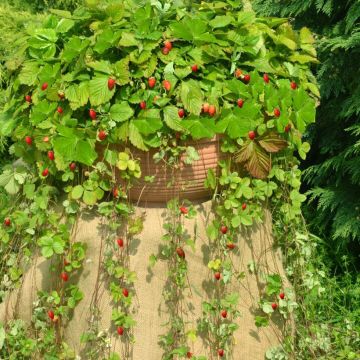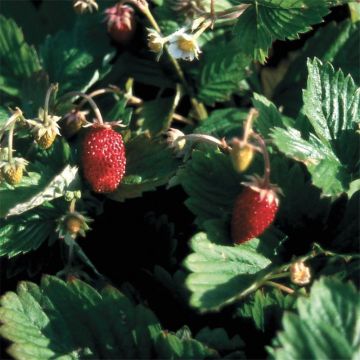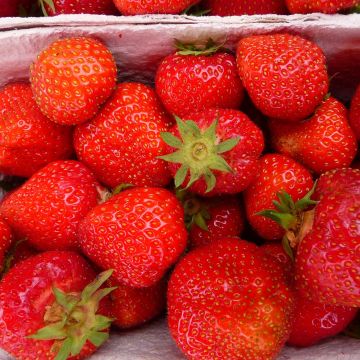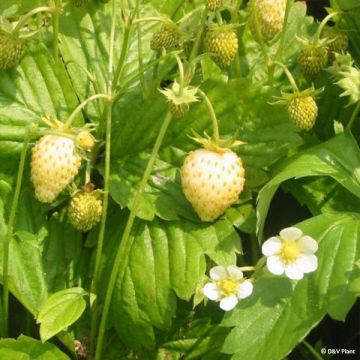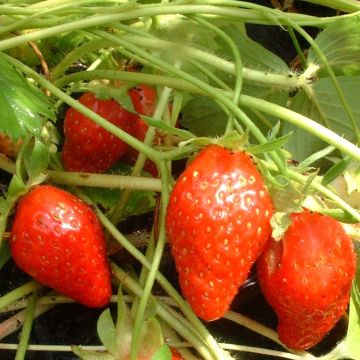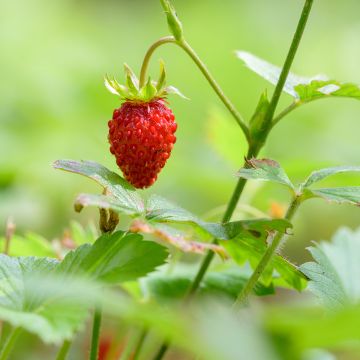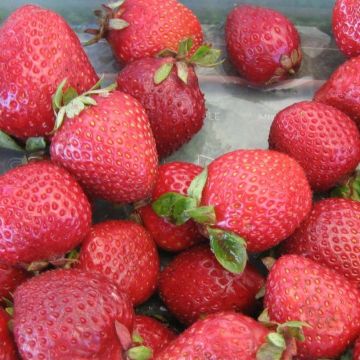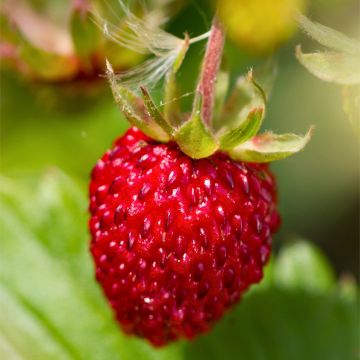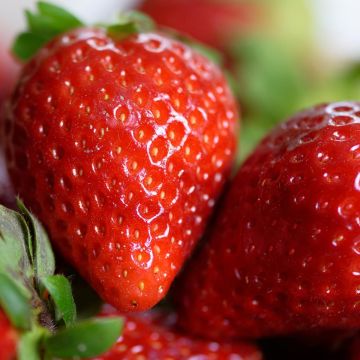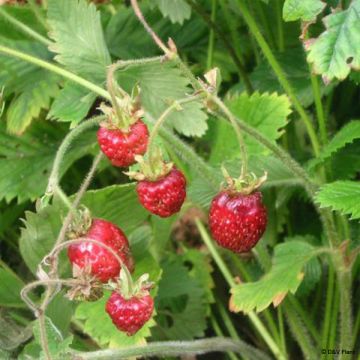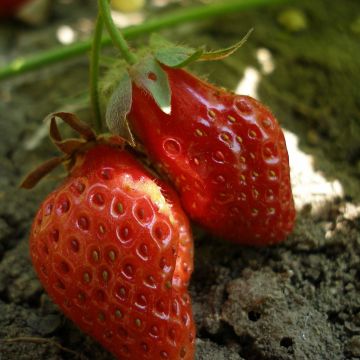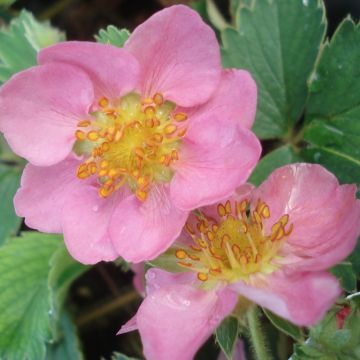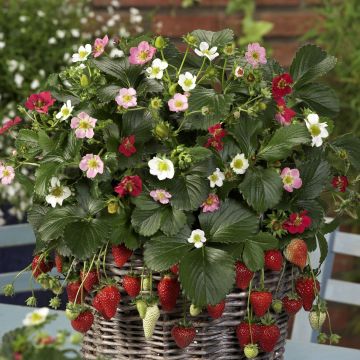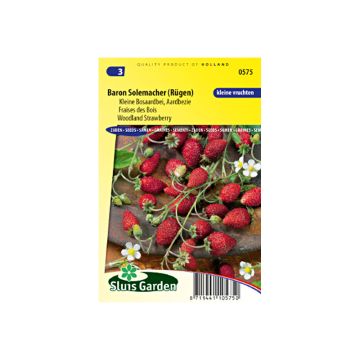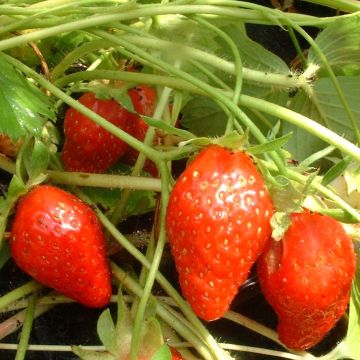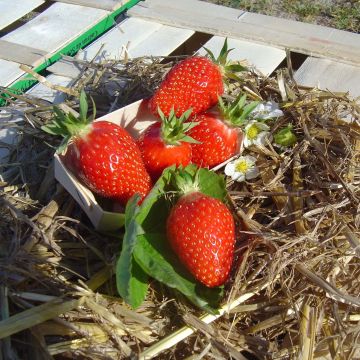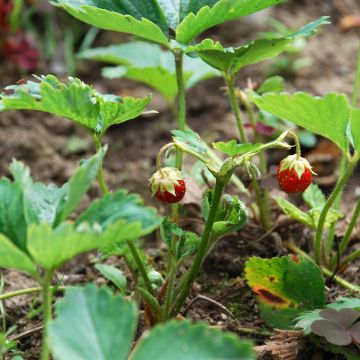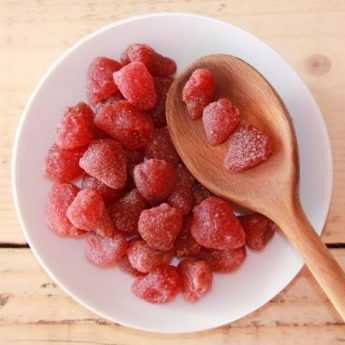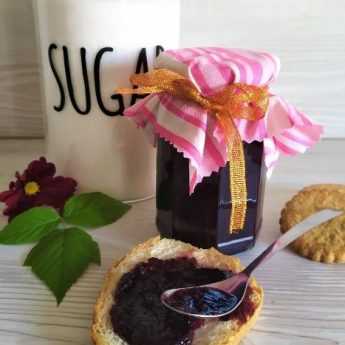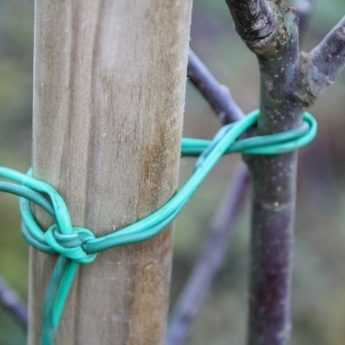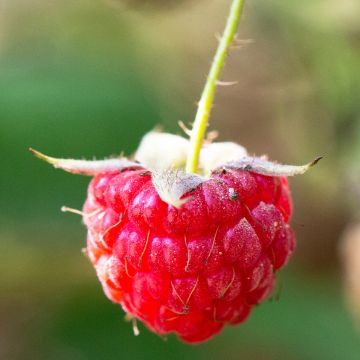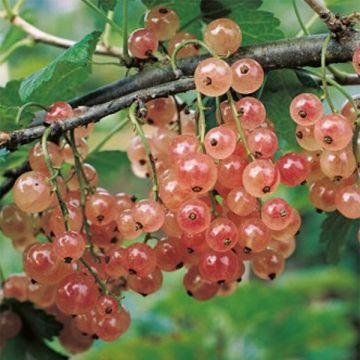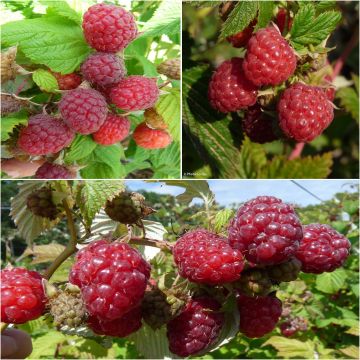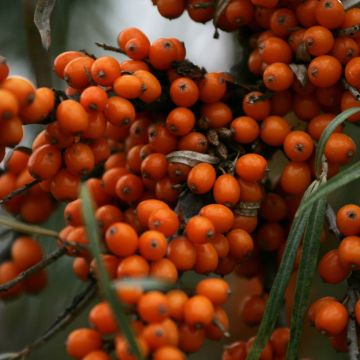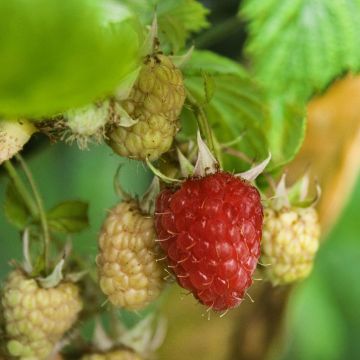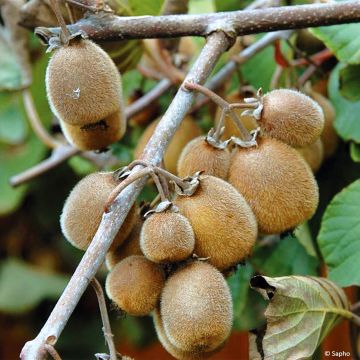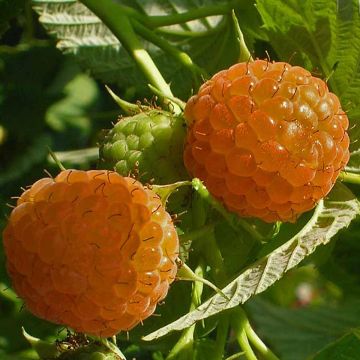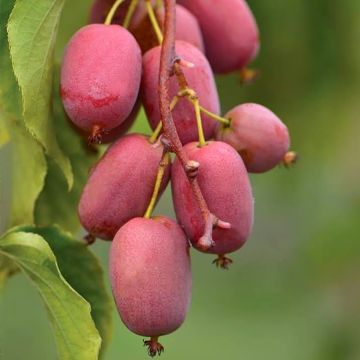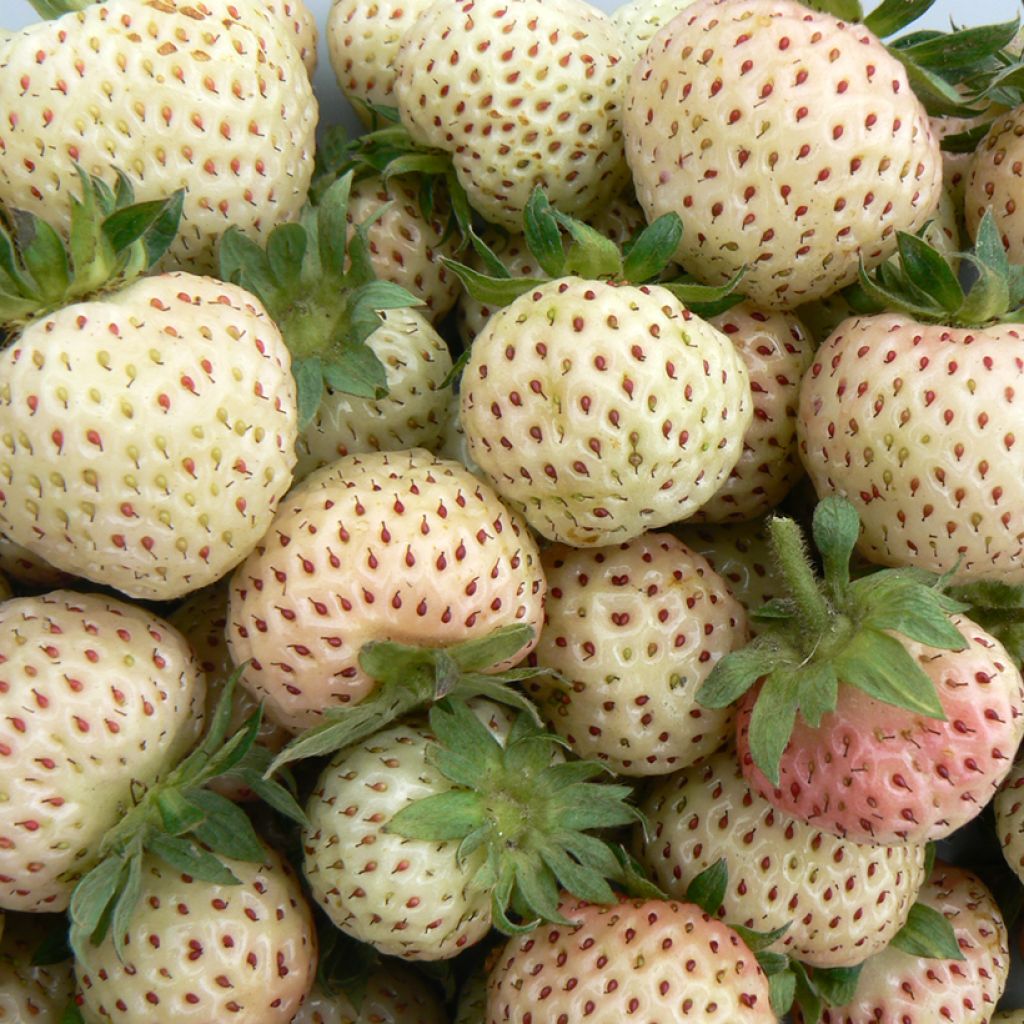

Fragaria Strawberry Ice
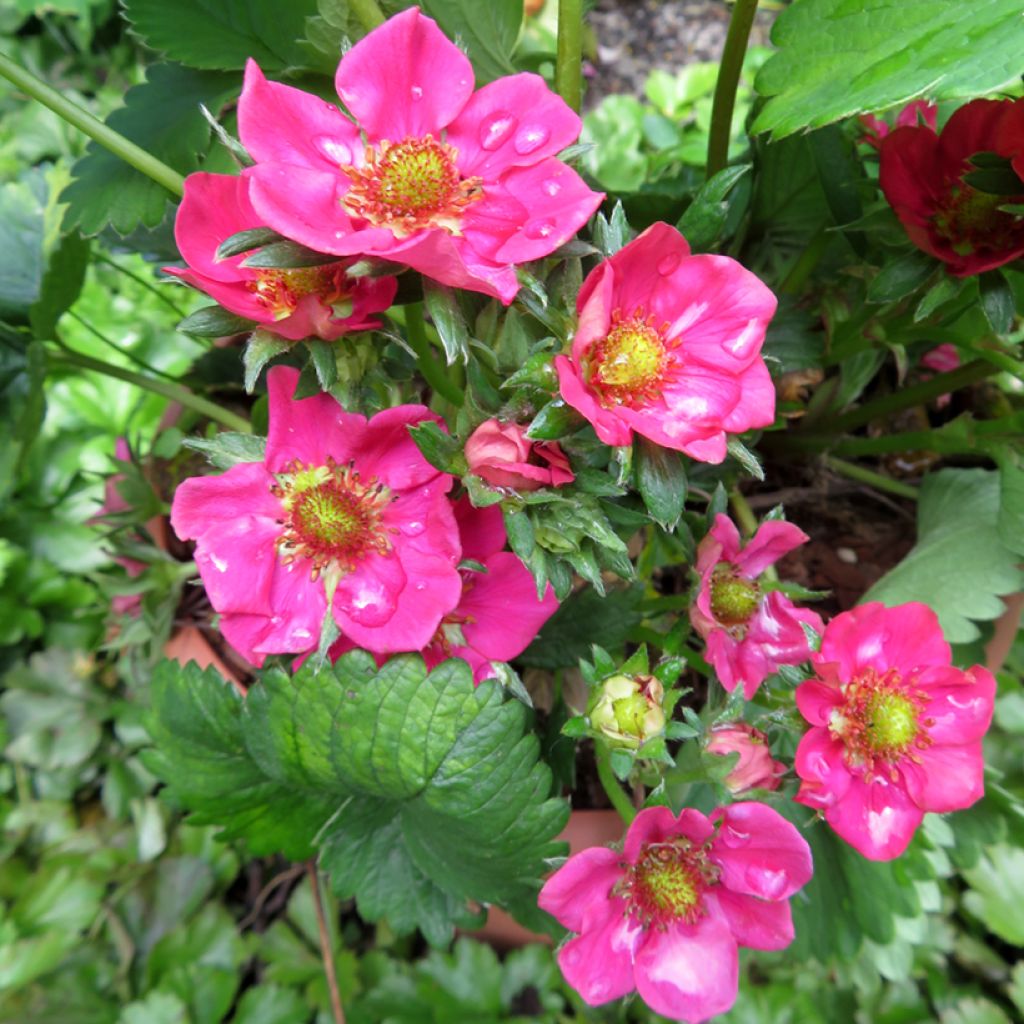

Fragaria Strawberry Ice
Fragaria Strawberry Ice
Fragaria (x) ananassa Strawberry Ice ®
Garden Strawberry, Pineapple Strawberry
Why not try an alternative variety in stock?
View all →This plant carries a 12 months recovery warranty
More information
We guarantee the quality of our plants for a full growing cycle, and will replace at our expense any plant that fails to recover under normal climatic and planting conditions.

Does this plant fit my garden?
Set up your Plantfit profile →
Description
The 'Strawberry Ice' perpetual strawberry is a hybrid variety that is both aesthetic and delicious. With its extended flowering period and beautiful bright pink flowers, this plant adds a touch of charm to your garden, while its delicious white fruits offer tasty harvests from May until the first frost. This innovative cultivar stands out for its productivity, robustness, and disease resistance. Ideally suited for pot or hanging basket cultivation, it forms dense clumps with long trailing stems, offering abundant flowers and fruits from spring to autumn. On balconies, this strawberry brings a touch of cheerfulness. In the kitchen, it lends itself to delicious preparations: whether eaten as is, blended into a sauce, or cooked in a pie, its fruity and sweet flavours will delight the taste buds.
The garden strawberry, also known by its scientific name Fragaria x ananassa, is a perennial plant with broad, evergreen foliage that forms rosettes and belongs to the Rosaceae family. Native to Europe, it results from a chance of cross-breeding between North American and Chilean species. Highly prized in gardens and for commercial production, these strawberries offer deliciously sweet fruits.
'Strawberry Ice' PBR is a newly released variety in 2024. This hybrid variety is appealing with its compact growth, pink flowers, and highly fragrant large white fruits. This plant forms an attractive clump that can reach a height of 30 cm and spread to 50 cm in width. Its evergreen, trifoliate, and finely toothed leaves form rosettes of lush dark green. The generous and extended flowering begins in April or May, depending on the region, and continues until the end of summer, with dark pink flowers surrounding a golden heart. Each flower transforms into a large conical fruit, offering firm and juicy flesh reminiscent of the characteristic aroma of strawberries, with a sweet and fruity flavour. The harvest extends from May until the first frost, with each mature plant capable of producing up to 1 kg of fruits. Botanically, strawberries are pseudocarps, with the true fruits being the achenes (seeds) visible on the surface of the epidermis.
In the kitchen, strawberries can be consumed in multiple ways. They can be eaten fresh, with sugar, cream, or sliced thinly and dried before being incorporated into muesli or yogurt. They also work well in sauces, jams, pies, ice creams, sorbets...
Strawberries are rich in vitamins B8 and B9, C and E, and provitamin A. They are considered remineralising and purifying. However, they can cause urticaria in some people, as they stimulate the release of histamine in the body.
Harvesting: Pick the fruits as they ripen every 2 or 3 days, ideally in the morning. Strawberries are delicate, so pick them with their stalks by pinching the stem 1 to 2 cm above it. The texture of the fruit is a good indicator of its ripeness. It should be firm and slightly soft to the touch.
Storage: Ideally, strawberries should be consumed soon after harvesting to enjoy their flavour fully. Refrigeration is possible but may alter the taste qualities of the fruits. Strawberries can also be dried or frozen. If you have a bountiful harvest, consider making jams, sauces, ice creams, or sorbets.
Gardener's tip: Strawberry plants are good companions for garlic, beans, lettuce, onions, leeks, thyme, and spinach. However, they do not appreciate the company of cabbage and other brassicas.
Report an error about the product description
Fragaria Strawberry Ice in pictures


Flowering
Foliage
Plant habit
Botanical data
Fragaria
(x) ananassa
Strawberry Ice ®
Rosaceae
Garden Strawberry, Pineapple Strawberry
Cultivar or hybrid
Other Strawberry plants
View all →Planting and care
The 'Strawberry Ice' Strawberry appreciates rich, humus-bearing, well-drained soils that are slightly acidic and do not dry out too much in summer. Loosen the soil a few months before planting and add a generous amount of well-rotted compost. If your soil is chalky, add turf and provide a mulch based on acidic materials (thorns or pine bark...). Remove weeds and rocks present in the soil. Planting this variety is preferably done in autumn. Choose a sunny spot. Strawberry plants are good companions for garlic, beans, lettuce, onions, leeks, thyme, and spinach. However, they do not appreciate the company of cabbages and other brassicas. Strawberries remain in place for 3 to 4 years.
In open ground: Space the plants 35 cm apart in all directions. Dig a hole, place the strawberry (the collar should be level with the ground) and cover with fine soil. Water generously. If your soil is moist, plant the plants on mounds 10 to 20 cm high.
In a pot: Place a layer of gravel or clay balls at the bottom of the pot to facilitate drainage. Fill the pot with a mixture of potting soil, garden soil, and compost. Place, cover with soil, and pack well. Water generously.
Regularly hoe. Mulch around the plants in summer to maintain soil moisture. Install a protective net before the fruits turn red to avoid sharing your harvest with birds... You can also install ash or coffee grounds near young plants to repel slugs and snails. Water regularly, especially in hot weather. In autumn, remove dry leaves.
In spring, add compost to the surface. In cool regions, install a tunnel in spring to protect the plants from spring frosts during flowering.
The plants need to be replaced every 3 or 4 years. This variety multiplies through shoots and small creeping stems that naturally root in the soil, forming new plants. To avoid exhausting the mother plant, cut the adventive shoots and replant them if desired.
Wait four years before replanting strawberry plants in the exact location.
Planting period
Intended location
Care
Planting & care advice
This item has not been reviewed yet - be the first to leave a review about it.
Similar products
Haven't found what you were looking for?
Hardiness is the lowest winter temperature a plant can endure without suffering serious damage or even dying. However, hardiness is affected by location (a sheltered area, such as a patio), protection (winter cover) and soil type (hardiness is improved by well-drained soil).

Photo Sharing Terms & Conditions
In order to encourage gardeners to interact and share their experiences, Promesse de fleurs offers various media enabling content to be uploaded onto its Site - in particular via the ‘Photo sharing’ module.
The User agrees to refrain from:
- Posting any content that is illegal, prejudicial, insulting, racist, inciteful to hatred, revisionist, contrary to public decency, that infringes on privacy or on the privacy rights of third parties, in particular the publicity rights of persons and goods, intellectual property rights, or the right to privacy.
- Submitting content on behalf of a third party;
- Impersonate the identity of a third party and/or publish any personal information about a third party;
In general, the User undertakes to refrain from any unethical behaviour.
All Content (in particular text, comments, files, images, photos, videos, creative works, etc.), which may be subject to property or intellectual property rights, image or other private rights, shall remain the property of the User, subject to the limited rights granted by the terms of the licence granted by Promesse de fleurs as stated below. Users are at liberty to publish or not to publish such Content on the Site, notably via the ‘Photo Sharing’ facility, and accept that this Content shall be made public and freely accessible, notably on the Internet.
Users further acknowledge, undertake to have ,and guarantee that they hold all necessary rights and permissions to publish such material on the Site, in particular with regard to the legislation in force pertaining to any privacy, property, intellectual property, image, or contractual rights, or rights of any other nature. By publishing such Content on the Site, Users acknowledge accepting full liability as publishers of the Content within the meaning of the law, and grant Promesse de fleurs, free of charge, an inclusive, worldwide licence for the said Content for the entire duration of its publication, including all reproduction, representation, up/downloading, displaying, performing, transmission, and storage rights.
Users also grant permission for their name to be linked to the Content and accept that this link may not always be made available.
By engaging in posting material, Users consent to their Content becoming automatically accessible on the Internet, in particular on other sites and/or blogs and/or web pages of the Promesse de fleurs site, including in particular social pages and the Promesse de fleurs catalogue.
Users may secure the removal of entrusted content free of charge by issuing a simple request via our contact form.
The flowering period indicated on our website applies to countries and regions located in USDA zone 8 (France, the United Kingdom, Ireland, the Netherlands, etc.)
It will vary according to where you live:
- In zones 9 to 10 (Italy, Spain, Greece, etc.), flowering will occur about 2 to 4 weeks earlier.
- In zones 6 to 7 (Germany, Poland, Slovenia, and lower mountainous regions), flowering will be delayed by 2 to 3 weeks.
- In zone 5 (Central Europe, Scandinavia), blooming will be delayed by 3 to 5 weeks.
In temperate climates, pruning of spring-flowering shrubs (forsythia, spireas, etc.) should be done just after flowering.
Pruning of summer-flowering shrubs (Indian Lilac, Perovskia, etc.) can be done in winter or spring.
In cold regions as well as with frost-sensitive plants, avoid pruning too early when severe frosts may still occur.
The planting period indicated on our website applies to countries and regions located in USDA zone 8 (France, United Kingdom, Ireland, Netherlands).
It will vary according to where you live:
- In Mediterranean zones (Marseille, Madrid, Milan, etc.), autumn and winter are the best planting periods.
- In continental zones (Strasbourg, Munich, Vienna, etc.), delay planting by 2 to 3 weeks in spring and bring it forward by 2 to 4 weeks in autumn.
- In mountainous regions (the Alps, Pyrenees, Carpathians, etc.), it is best to plant in late spring (May-June) or late summer (August-September).
The harvesting period indicated on our website applies to countries and regions in USDA zone 8 (France, England, Ireland, the Netherlands).
In colder areas (Scandinavia, Poland, Austria...) fruit and vegetable harvests are likely to be delayed by 3-4 weeks.
In warmer areas (Italy, Spain, Greece, etc.), harvesting will probably take place earlier, depending on weather conditions.
The sowing periods indicated on our website apply to countries and regions within USDA Zone 8 (France, UK, Ireland, Netherlands).
In colder areas (Scandinavia, Poland, Austria...), delay any outdoor sowing by 3-4 weeks, or sow under glass.
In warmer climes (Italy, Spain, Greece, etc.), bring outdoor sowing forward by a few weeks.



































